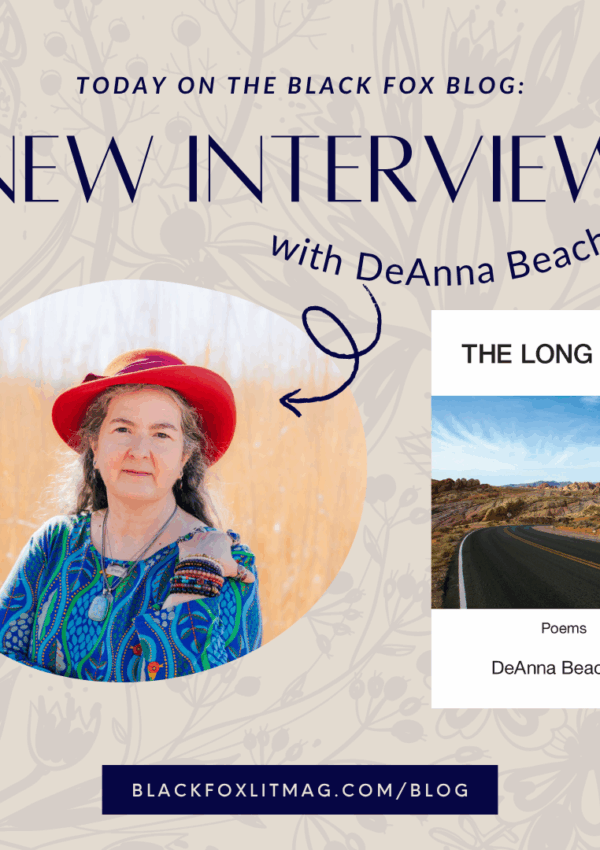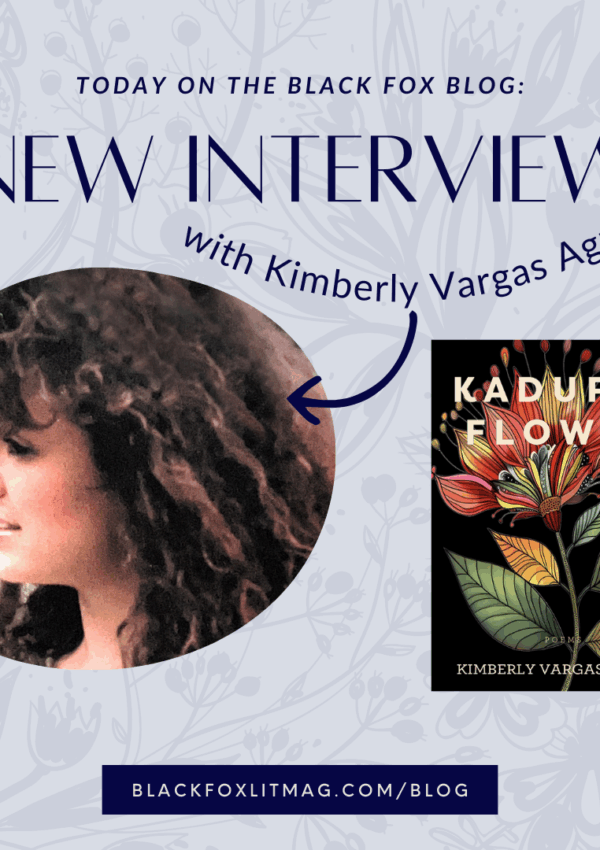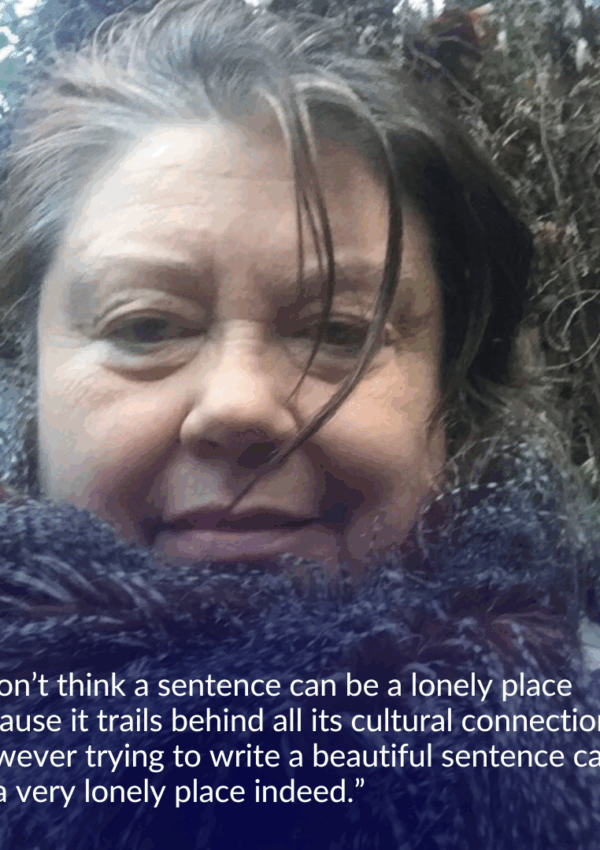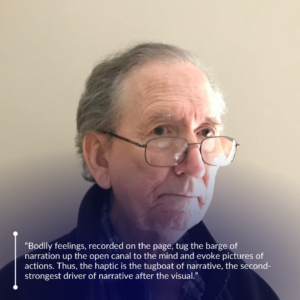Jarret Keene earned his Ph.D. in creative writing at Florida State University. A beloved and highly sought after professor, Dr. Keene is an assistant professor in the Department of English at the University of Nevada, Las Vegas where he teaches American literature and the graphic novel. He has written a travel guide, a rock-band biography, poetry collections and edited short-fiction anthologies including Las Vegas Noir and Dead Neon: Tales of Near-Future Las Vegas. His blistering dystopian adventure novel Hammer of the Dogs was published by the University of Nevada Press in September. Learn more about the author by visiting www.jarretkeene.net.
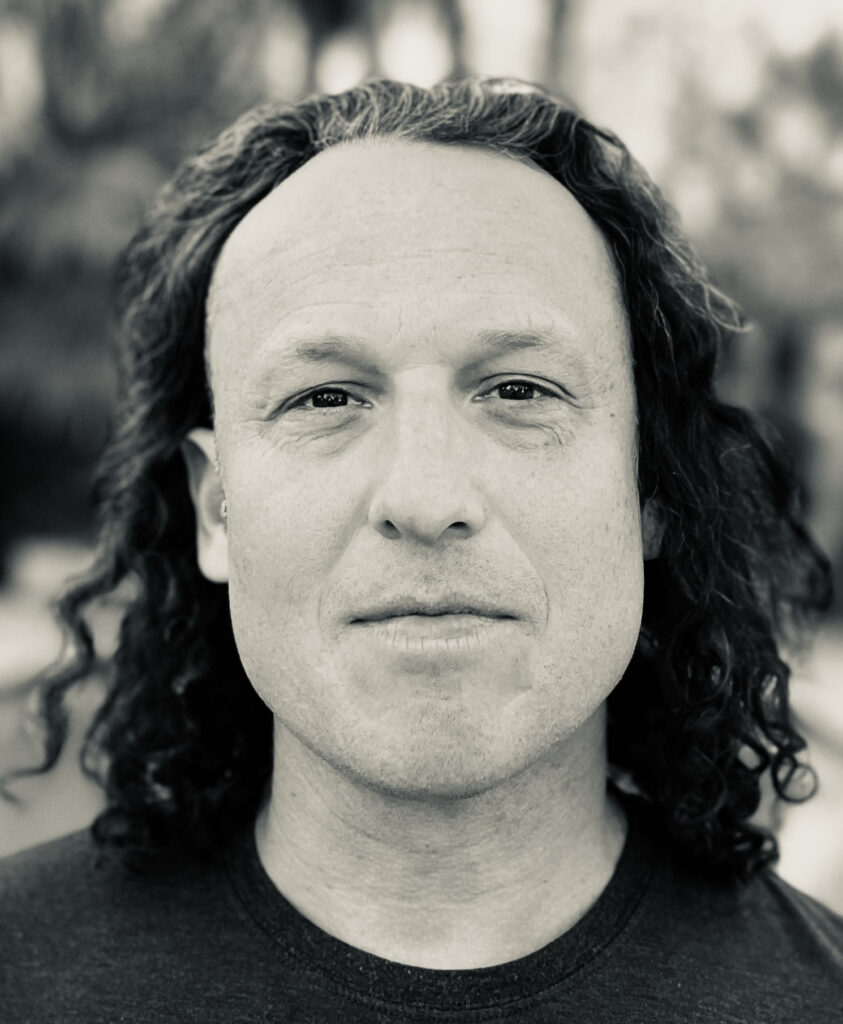
Heather Lang-Cassera: Congratulations, Jarret, on your brand-new novel, Hammer of the Dogs, out with University of Nevada Press. As someone who lives in Las Vegas like you, I am fascinated by this post-apocalyptic adventure novel set right here in our city! I have so many questions I’m excited to ask. Let’s begin with some of the book’s iconic Vegas imagery—the flamingos! Without giving away too much of the story, can you please tell us a bit about the strange and fascinating weapon-engineered flamingoes?
Jarret Keene: Ha! I love how you begin our interview by addressing the novel’s “final boss battle.” The genetically modified flesh-eating flamingos are a nod to three different pop-culture ideas. So, at the end of the 1984 movie Sheena, starring the late Tanya Roberts, the Queen of the Jungle telepathically summons a flamingo flock to swarm the bad guy’s helicopter, causing it to explode. Then, of course, there’s the pack of man-eating pigs, cross-bred with giant forest-boars, in Thomas Harris’ 1999 novel Hannibal, adapted into a 2001 film. Let’s not forget the aviary carnage unleashed by Alfred Hitchcock’s The Birds from 1963. So, I ended up combining these three outrageous cinematic ideas to fashion a new drone-destroying, human-shredding terror. I needed something excessive for the book’s warrior, Lash, to battle near the book’s end, and a deadly, carnivorous flamingo attack seemed the right way to go! I think readers are going to love seeing the hero survive and take down a brutal onslaught of pink-feathered death.
HLC: Haha. Well, flamingos seem like the perfect final-boss collective for an author born in Florida who has made his home in Las Vegas. Now you’ve got me thinking about your protagonist, Lash. She follows in some pretty big footsteps, Lara Croft, Imperator Furiosa, Katniss Everdeen, etc. Who would win in a fight, and why?
JK: Well, Lash’s influences go back much further—back to 1980s sci-fi/fantasy films with Ellen Ripley in Aliens, Sarah Connor in Terminator 2: Judgment Day, Officer Anne Lewis in Robocop, Sarah Williams in Labyrinth, plus Red Sonja, Supergirl, and then 1940s comic-book heroes like Sheena, Phantom Lady, and Miss Fury. So, in creating Lash, I looked beyond the recent warrior women that you mentioned, to present the vulnerabilities and imperfections that the earlier characters in this tradition once displayed. The way I see it: Croft, Furiosa, and Everdeen are very cool characters, but they don’t often fail or make ridiculous mistakes or allow themselves to be—slight spoiler here—captured by the enemy warlord. With Lash, I wanted to present a young woman who thinks she knows what she’s doing, believes herself the best, but who sometimes ends up getting people killed and getting herself captured. Lash isn’t a buffoon, but readers should identify her many problems instantly. Hopefully, readers cheer on Lash as she gains her footing and as she learns to become the warrior queen she is meant to be. To answer your question, though, in a straight-up, no-limits brawl, I’d have to go with Lash, since she has a special talent that takes nearly the entire story for her to discover and to use effectively. It gives her the edge in any battle royale, or last-person standing deathmatch.
HLC: Absolutely! I am totally cheering on Lash—including because she is such a complex, and therefore engaging, protagonist.
Jarret, we both teach at universities. Oftentimes, my fiction students are curious about how they might shift from writing a short story, as a more achievable length within a semester-long class, to a novel. Based on your writing of Hammer of the Dogs, what advice might you have for them?
JK: I wrote a decent chunk of Hammer of the Dogs with one of my writing workshops. Every week, I’d bring in another chapter, anywhere from 1,500 to 3,000 words. I’d kick off each class meeting by reading aloud my hot-off-the-MacBook installment as a way of showing students, in 15 weeks, how to maintain discipline and momentum in drafting a novel. At the end of the semester, I had 30,000 words of the book done. You know what was cool, Heather? The students joined me bringing to class chapters from their own novels, stories and essays and poems from their own collections. I didn’t inspire them so much as encourage them to work diligently on producing a manuscript. Since that time, most everyone in that class has published at least part of what they began presenting to class. Two of those students self-published their novels on Amazon, and even more of them published work in literary journals and local magazines. The switch from writing stories to writing a novel isn’t really a huge step if you think of a story collection as a book-length project. My advice is to write every week, at least 3,000 words minimum, when you’re enrolled in a writing workshop. It doesn’t matter so much what you’re writing so long as you keep at it, with total commitment and not making excuses. My advice is to always move forward and not succumb to paralysis and doubt. It’s like anything else: If you show up every day, progress will happen. You’ll see it, and others will notice it, too. Don’t let perfectionism stall you. You can be perfect later, after you have 70,000 words to work with, to revise and polish and fret over. But you need words and you need a lot of them to make a book.
HLC: While we are on the topic of craft, I want to ask: did you envision this story from beginning to end in any way before you got started?
JK: I had all the beats, but I wasn’t quite sure how to link them up exactly. So I wrote the story in a 1980s sci-fi-fantasy-adventure-horror movie dream state, rifling through my memories of all those beautiful films that tantalized me as a child: [Keene impressively recites a list of his favorite 1980s films] Legend, Ladyhawke, Goonies, Gremlins, Godzilla 1985, Greystoke: The Legend of Tarzan, The Empire Strikes Back, Tron, Red Dawn, Dune, Splash, Megaforce, Rad, Howard the Duck, Flash Gordon, The Adventures of Buckaroo Banzai in the 8th Dimension, The Secret of NIMH, Fire and Ice, Heavy Metal, Red Sonja, The Legend of Billie Jean, Mannequin, Weird Science, Purple Rain, Rocky III, Top Gun, Iron Eagle, Krull, The Neverending Story, The Dark Crystal, Dragonslayer, Conan the Barbarian, Willow, The Last Starfighter, The Karate Kid, Dawn of the Dead, Day of the Dead, Blade Runner, Brazil, The Black Hole, The Black Cauldron, Time Bandits, Superman IV: The Quest for Peace, Star Trek II: The Wrath of Khan, The Clan of of the Cave Bear, Quest for Fire, Iceman, Firefox, Highlander, and The Legend of the Lone Ranger. I poured everything I loved about these films onto the page, distilling the “bright darkness” that makes these movies so enduring. And by bright darkness, I mean a dark premise over which a colorful heroic narrative unfolds. That’s what I set out to accomplish, and it’s what I believe I achieved. The plot seemed to write itself, or rather Lash always seemed to know in which direction the story needed to go. And Lash kept things fun and colorful, even when she found herself surrounded by dark forces and with a limited chance for escape. Today, movies offer a muted visual palette, everything is a CGI-ready gray/steel-blue/black color scheme, and the characters tend to be either feeble losers or else everyone dies in the end. There is no fun that I can discern, just lots of graphic FX and miserable characters. For example, I had to watch Supergirl and Batman both get killed in the recent Flash movie. Enough! Who wants this? And contemporary fantasy novels aren’t much better, just an unhappy series of gruesome incidents in the style of Game of Thrones. Before I got started, I knew I wanted to avoid replicating the “writer’s room” approach to crafting a story. I sought to write a retro-futuristic tale that involved futuristic drone tech, yes, but I also wanted to pay tribute to the great books and films of 40 years ago. I needed a lovable yet gouged character like Lash to pull the reader into the story and to make the set pieces simmer with emotional turmoil and yearning.
HLC: You write in a variety of genres: travel guide, rock-band biography, poetry, etc. How are those processes different, and how do they inform one another?
JK: They’re all related in the sense each of the books I’ve written or edited cover the realm of popular culture. My travel guide covers the Las Vegas underground art and entertainment scene, my biography of the Killers addresses rock music, and my poetry is certainly obsessed with old comic books and films. If there’s a book that needs to be written about any aspect of pop culture, I feel confident I can deliver it in any medium, any genre or category. Writing poetry for years taught me a lot about compression, a lot about how to use the fewest words to convey the biggest images or ideas. So, a lot of the time that I spent learning how to craft formal verse ended up being valuable to me in my turn as an entertainment writer in Las Vegas. It’s weird to say it out loud, but writing poems helped me to become a professional and very successful book, music, art, food critic for the weekly newspapers here and in other cities and markets. So, the process is different in terms of expectations—when you write a travel guide, you don’t want to head off on a tangent that will confuse the reader. The reader simply wants to know if the location is worth a visit, how much is admission, and so on. With a rock bio, the reader wants to know stuff about the band that they can’t easily look up on the internet. And with poetry, the reader wants to be transported, taken to a place that no one else has rendered in quite the same fashion. I don’t why you’d do this or what value it would offer, but if you read all my books, jumping from one subject to another, you’d certainly discern a common thread, I imagine: I love art, and I love writing about art and artists in different ways—commercial, poetic, fictional. I can’t see myself having written one without the other. I’m grateful to have had the opportunity to write and edit different kinds of books over the years. Without this experience, I doubt my novel Hammer of the Dogs would be as powerful as it is.
HLC: Yes. This certainly shows in the vibrant ways in which everything comes together in your novel! Because we are talking about your diverse and prolific publication history, I think we should end with this classic question: what are you working on now? How is it similar to or different from Hammer of the Dogs?
JK: I’m working on a series of Western YA novels for Wolfpack Publishing starring a vain, chaotically neutral young gunslinger named Kid Crimson. The Kid is very similar to Lash in that he possesses seemingly endless wounds accumulated during his adolescence. When he should’ve been loved and protected, he was abused and terrorized by authority figures. His wounds make him dark and prickly, yet he is also profoundly charming and charismatic. He’s the youngest, deadliest, best looking station agent and union-breaker in Virginia City, Nevada. He’s good friends with an ambitious young newspaper reporter named Sam Clemens, and he’s deeply infatuated with a dangerous and beautiful opium nymph named Jazmin who relays valuable information to him through her vice connections. Jazmin adores the Kid—she is the only person in Virginia City who knows a secret about him that could ruin his career: he’s afraid of horses. I see the Kid Crimson series as a cross between Twilight and Yellowstone, and I enjoy writing young characters thrust into degraded environments where they can be easily exploited or crushed. Like Hammer of the Dogs, the Kid Crimson series is rife with ultraviolence and cool plot twists and lively characters. There’s a literary heart to everything I do, even pulp fiction.
HLC: Afraid of horses! What an excellent nuance. Such an unexpected twist! Jarret, I am very much looking forward to reading your Kid Crimson series. Thank you so much for taking the time to chat with me for Black Fox Literary Magazine.
About the Interviewer:
Heather Lang-Cassera is a full-time lecturer with Nevada State University, a Tolsun Books publisher, and a 300 Days of Sun Faculty Advisor. She was a 2022 Nevada Arts Council Literary Arts Fellow and the 2019-2021 Clark County, Nevada Poet Laureate. She is the author of Gathering Broken Light (Unsolicited Press, 2021), which was written with the support of a Nevada Arts Council grant and won the NYC Big Book Award in Poetry, Social/Political. Her next collection of poems, a book of ecopoems with the working title of Firefall, has been acquired by Unsolicited Press for publication in 2025
